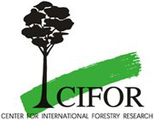The brief, 'Can Safeguards Guarantee Gender Equity?
Lessons from research on women in early REDD+ implementation' outlines current gender disparities in REDD+ noting that women generally have a less well developed understanding of REDD+, are more superficially engaged, and are not as well informed on local REDD+ initiatives and projects.
 December 2014: In support of discussions on REDD+ at the UN Framework Convention on Climate Change (UNFCCC) meetings in Lima, Peru, the Center for International Forestry Research (CIFOR) released a series of briefs on REDD+ safeguards. The fourth in the series explores the role of safeguards in ensuring gender equity in REDD+.
December 2014: In support of discussions on REDD+ at the UN Framework Convention on Climate Change (UNFCCC) meetings in Lima, Peru, the Center for International Forestry Research (CIFOR) released a series of briefs on REDD+ safeguards. The fourth in the series explores the role of safeguards in ensuring gender equity in REDD+.
The brief, titled ‘Can Safeguards Guarantee Gender Equity? Lessons from research on women in early REDD+ implementation,’ outlines current gender disparities in REDD+ noting that women generally have a less well developed understanding of REDD+, are more superficially engaged, and are not as well informed on local REDD+ initiatives and projects.
In order to address gender inequalities, the brief notes that many REDD+ programmes focus on the participation of women, however this is insufficient as it fails to rectify basic imbalances. As such, the brief explores conditions under which gender balance is more likely to be achieved, citing strong participation among women in local decision and rule making, greater reliance on forest resources by women when compared to men, and the development and implementation of REDD+ initiatives that take a gendered approach.
The brief concludes that in order to contribute to gender mainstreaming, REDD+ safeguards should go beyond participation by men and women and include gender equitable distribution of benefits as a specific goal. CIFOR is part of the CGIAR Consortium. [Publication: Can Safeguards Guarantee Gender Equity? Lessons from research on women in early REDD+ implementation]